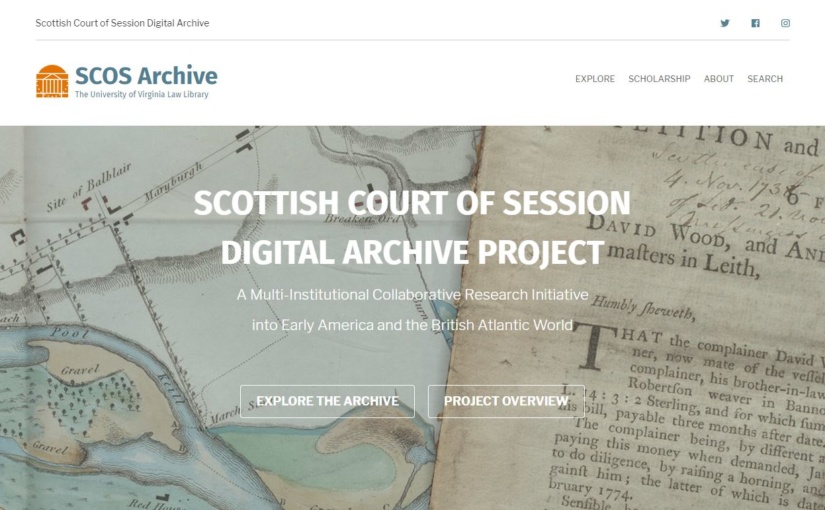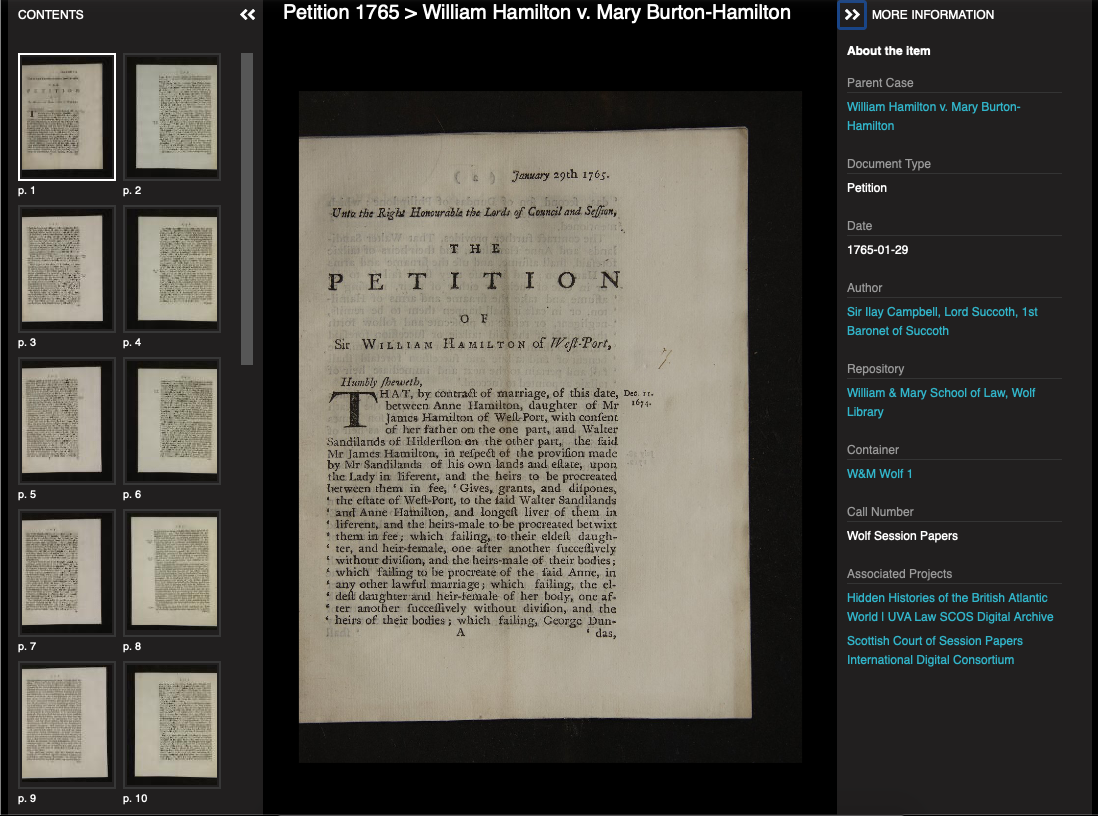The SCOS team is pleased to release Version 2.0 of our project. This latest version of SCOS is built in Drupal 8, a robust open-source content management system, and features a redesigned front end and metadata scheme to enhance the project's research and teaching potential.
Creating SCOS 2.0 required migrating the old database built in Drupal 7 to Drupal 8, a challenging task given the complexity of SCOS's underlying data structure. The migration required extensive custom coding and a staged migration process to successfully move the data from the old instance of Drupal to the new. Drupal 8 itself was rebuilt from the ground up to improve both user and developer experience. New features like paragraphs, blocks, and layout manager allowed us to rethink how patrons would interact with the project and reconsider how the team could inspire new conversations about legal history and the British Atlantic World in general.
SCOS 2.0 advances the project in two critical ways.
First, it now offers users a variety of ways into Session Papers, including essays that describe Session Papers and the legal process, SCOS's technical underpinnings, curated entry points that group cases in the collection by theme, and much more. Visitors are also able to monitor the team's digitization process, including the number of pages available to view, and peruse Session Papers by repository.
Second, our on-going collaboration with the Centre for Research Collections at the University of Edinburgh and the advent of new technology created opportunities to reconsider how we store, process, and deploy digitized Session Papers on our project site.
In SCOS 1.0, we offered visitors digitized copies of Session Papers in the form of compound PDFs. Optical Character Recognition (OCR) permitted full text search, but storage and bandwidth constraints prevented us from displaying images in high-resolution, something especially important given the unique marginalia on many of the documents in SCOS. It also made it difficult for viewers to have a sense of a document's scope without scrolling through an entire PDF.
At the same time, our discussions with our Edinburgh partners inspired us to think of ways that we might "return home" Session Papers printed in Edinburgh and later scattered across the United Kingdom and North America, and the potential to reassemble complete cases out of documents held by various libraries and archives. Given that the curation of Session Papers was a very personal act in the eighteenth and nineteenth centuries, which saw advocates and institutions keep some case documents and discard others, we wanted to find a way to rebuild cases from constituent parts scattered across the globe.
To accomplish our goals, position SCOS for eventual expansion, and leverage Edinburgh's expertise in best practices in digital collections management we began implementing the International Image Interoperability Framework (IIIF) protocols in SCOS. IIIF is a technology that enables libraries, archives, and individuals to share digitized collections across platforms, allowing them to aggregate disparate archival materials and create new digital projects. IIIF also opens up a world of possibilities for metadata curation and full text search that allows us to add considerable value to Session Papers in SCOS.
As the University of Edinburgh already had began using IIIF and establish a reputation for developing with it, we struck an agreement with our colleagues there to host our Session Papers on Edinburgh's servers. We now upload our images directly to these systems. This means that the digitized Session Papers you see on SCOS 2.0 have returned "home" to Edinburgh.
Session Papers now appear in high-resolution on SCOS via IIIF in Universal Viewer, an example of which you can see below.
The underlying IIIF manifests are essentially structured data that synchs between our site and Edinburgh's servers. Patrons can now examine one page at a time while having a visual sense of the entire document and the ability to navigate to other pages with ease. IIIF also allows us to associate actionable metadata with a record, enabling viewers to select authors, repositories, parent cases, or associated projects to view related items. This not only makes SCOS more responsive by reducing image load times, it also makes it easier for scholars, teachers, and the public to use these materials in their own work. while. Finally, reconfiguring SCOS for IIIF positions the project to become a hub for additional partners who hold collections of Session Papers.
By using constantly evaluating our process, keeping the needs of our patrons front and center, and our collective desire to push the intellectual and technological envelop, SCOS 2.0 makes it even easier to recover hidden histories of the British Atlantic World.


